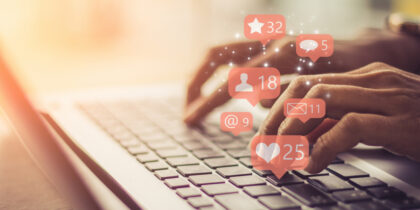The Internet of Things (IoT) is forcing IT decision-makers to take on increasingly important leadership roles in their organizations, acting as trusted advisors tasked with guiding the effective integration of an ever-expanding portfolio of connected devices that communicate with each other. In order to do so, those decision-makers must ensure they have the right technology infrastructure for those devices to communicate effectively and efficiently. With growing trends like BYOD and mixed-device environments, enterprises now more than ever depend on solutions that drive optimal and efficient wireless work environments by providing additional levels of security, voice and video quality, and seamless service to share anytime, anywhere. With the mobile industry exploding to $13 billion by 2019, according to data from the Dell’Oro Group, enterprises must optimize today’s investment in network infrastructure with proper planning and design.
Here are three key factors to consider when reviewing your WLAN and Internet of Things strategy:
1. Understand Your Needs
First and foremost, IT decision makers must think about the overall, end-user experience that you want to provide. Fast and secure Wi-Fi isn’t only expected at a desk, but also within every office, conference room, or common area in the building – and sometimes, outside. Many business users today also carry upwards of three devices to work and each of them needs to be able to connect to a secure network often simultaneously and be assured bandwidth will be available for their important business applications. Not only does the device need to be secure, but the network transmitting personal and corporate information must be able to recognize potential malware or hackers. This consideration was especially true for the IT decision makers during construction of Mountain View Research & Development Center, the brand new Samsung Research America campus. Not only did the Center’s employees need fast, secure and reliable network access for hundreds of employees and thousands of devices, they needed to ensure they had the same secure quality of connections across the entire campus.
2. Plan your network
With myriad WLAN solutions available, finite budgets and seemingly infinite needs across an entire enterprise, actually planning a comprehensive WLAN network can be a time-consuming balancing act. While each enterprise will need to customize their network to fit their own specific needs or requirements, there are a number of factors to consider. Many legacy devices can consume significantly more bandwidth compared to today’s current devices. How will your WLAN network ensure ample bandwidth for all users and won’t slow down in a mixed device environment? While upgrading to 802.11ac networks can support significantly higher speeds and multiple connections, the radio frequencies and resulting coverage patterns will change drastically compared to previous standards. With this change, will you need to simply fine-tune or radically overhaul your access point configurations when upgrading to 802.11ac? If you do decide to upgrade your WLAN network to 802.11ac, can your wired networks and backhaul infrastructure fully support the massive amount of data that these networks can carry? When it comes to planning a network, compromises are inevitable, but throughout this process IT decision-makers must ensure that these planning decisions don’t compromise each enterprise’s core need.
3. Prepare for the Future, Today
According to IDC, the digital universe is doubling every two years and will reach 44 trillion gigabytes by 2020. Quite literally, this proves that the Internet of Things is upon us and businesses and IT managers need to prepare for what that means for their platforms and equipment. Similar to buying a new car, it is critical to research a variety of WLAN infrastructure providers while considering what your business needs now and what you may need up to five years from now. In order to avoid having to update the system every few years to accommodate, IT managers should look for equipment that is designed to handle such evolving needs. With new standards such as 802.11AC Wave 2 slated to deliver significantly faster speeds than traditional gigabit wired connections, will your existing network design and infrastructure need to be completely replaced to give your enterprise access to the fastest speeds? When tasked with installing the infrastructure that many businesses depend on the most, it is paramount for IT leaders to have a trusted partner that will also be available for those inevitable hiccups that cause network downtime. Choosing a provider that offers reliable support and solutions that can easily scale with growing data traffic will allow decision makers to feel confident that if any issues should arise following a deployment, time and money won’t be wasted negotiating additional services.
Now is the time to make sure your network infrastructure is equipped to meet these growing bandwidth demands and proliferation of devices. When it comes to choosing the right wireless network platform for your business, one ‘size’ does not fit all, which is why Samsung offers a number of WLAN products and solutions that can be customized for any enterprise environment. If you or your company is considering a new or upgraded WLAN platform ready for the Internet of Things, these three tips will help you and your teams get started in the right direction.







